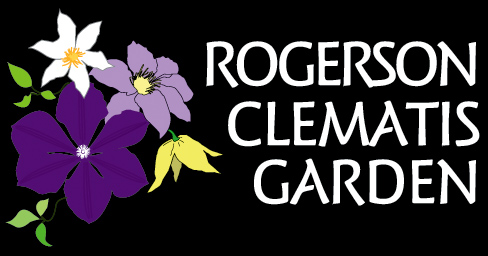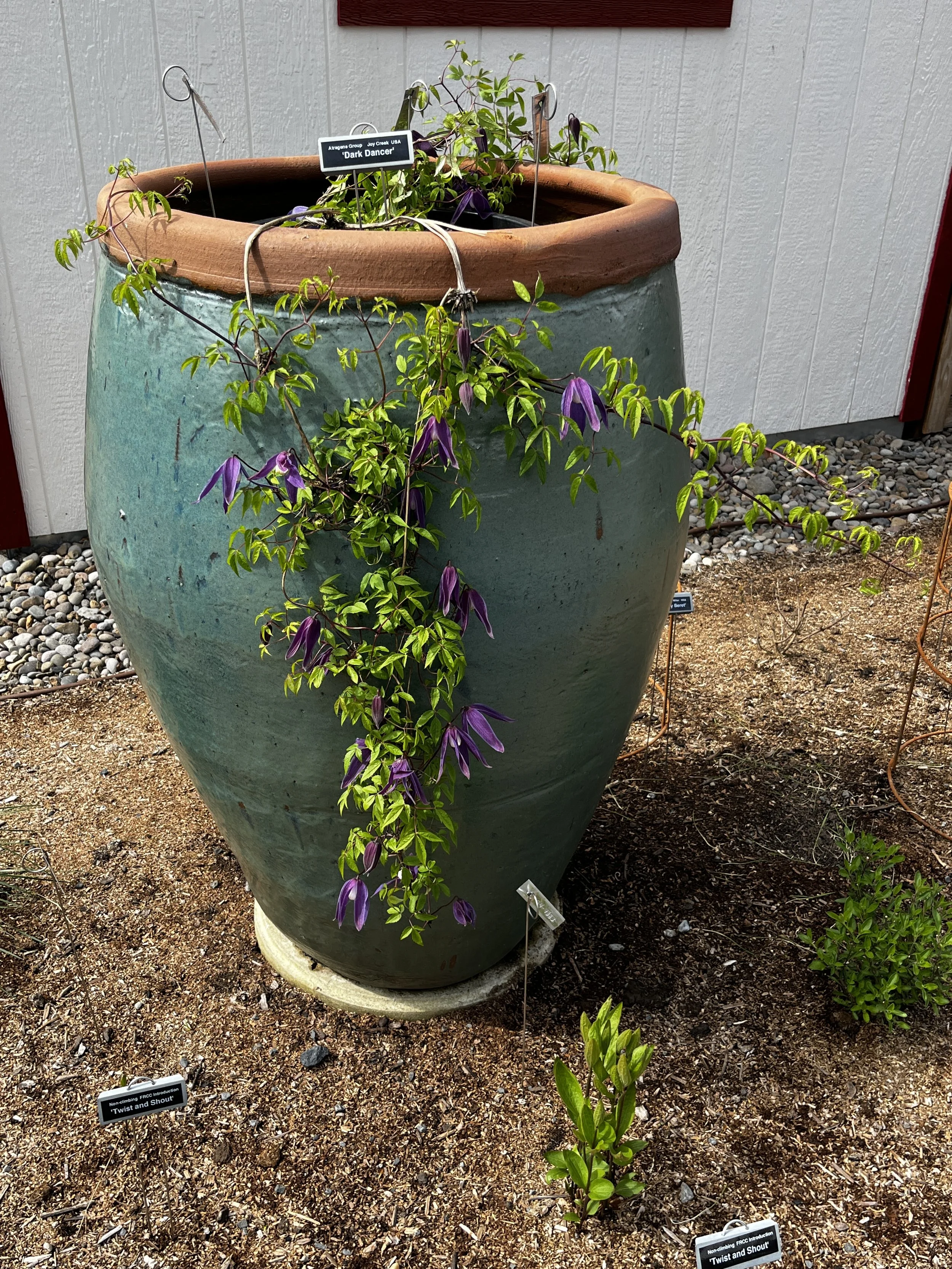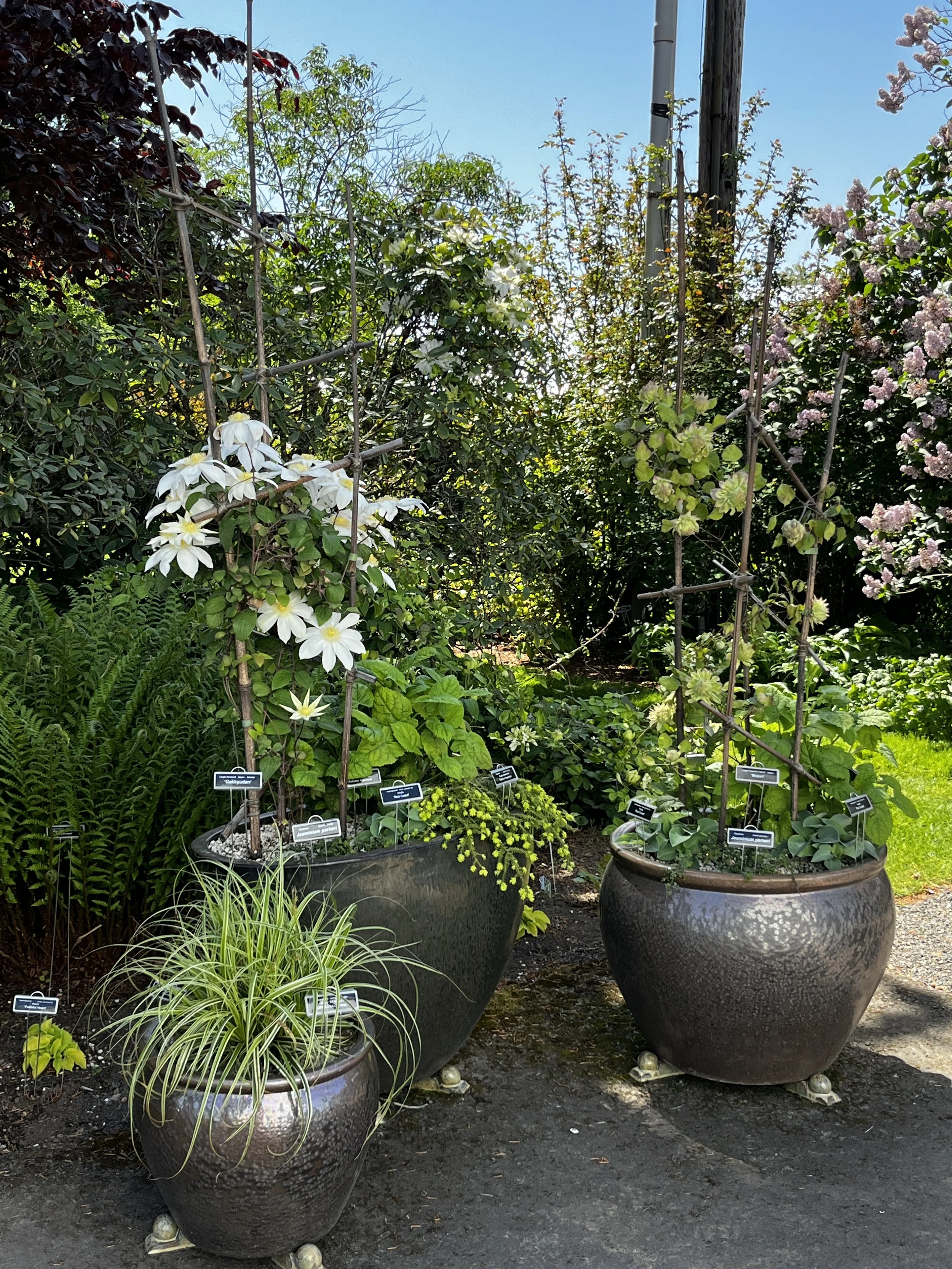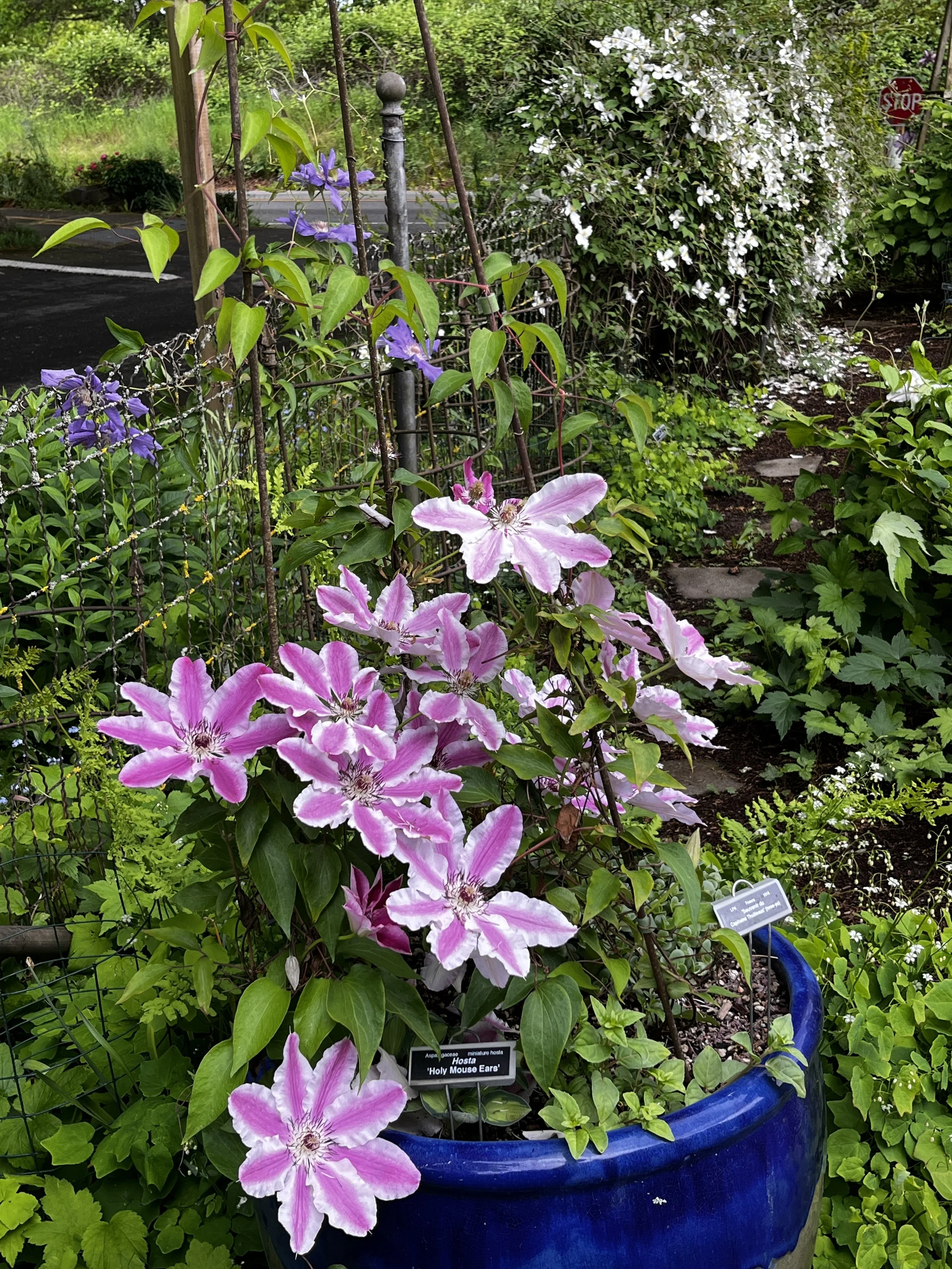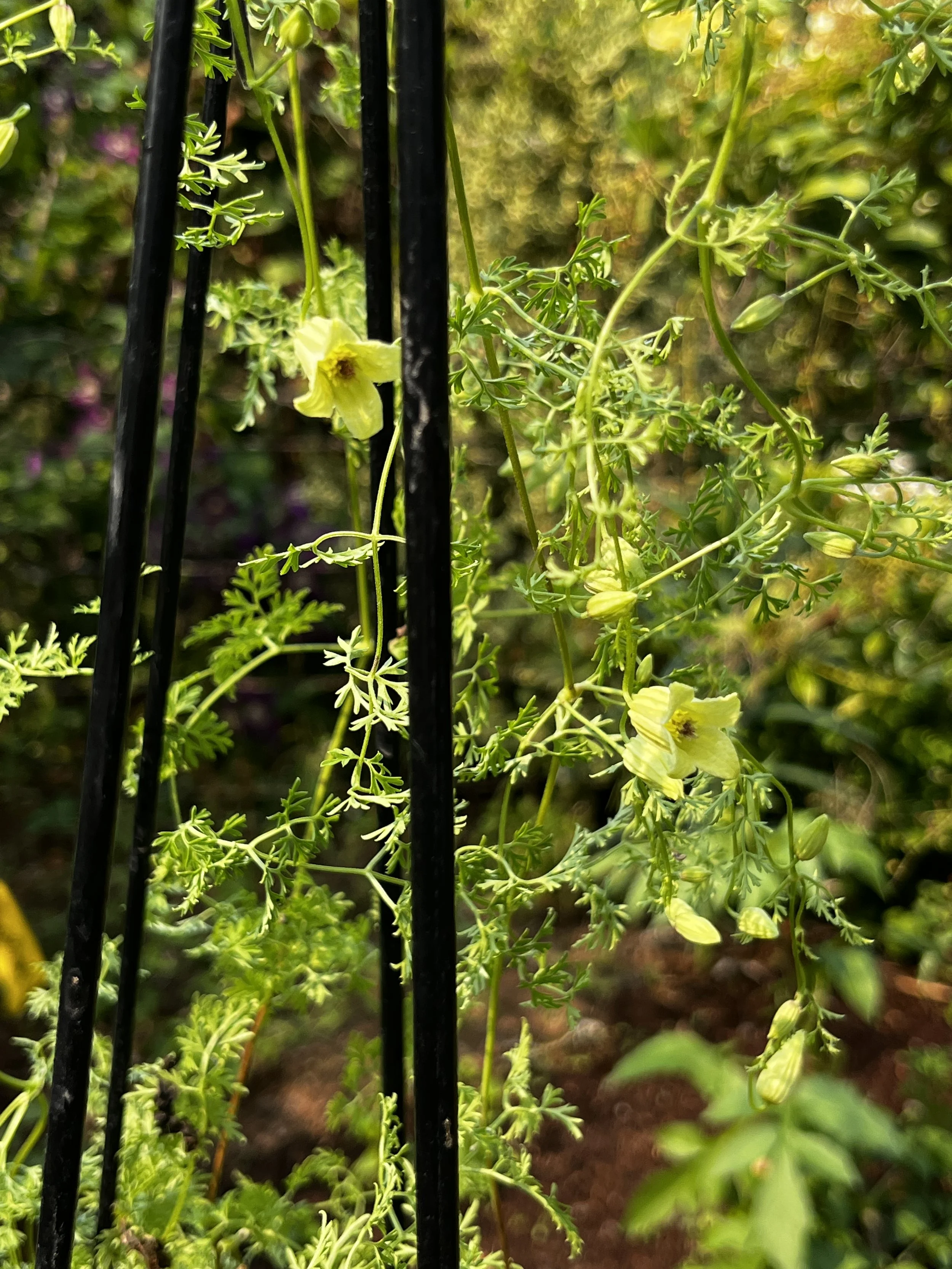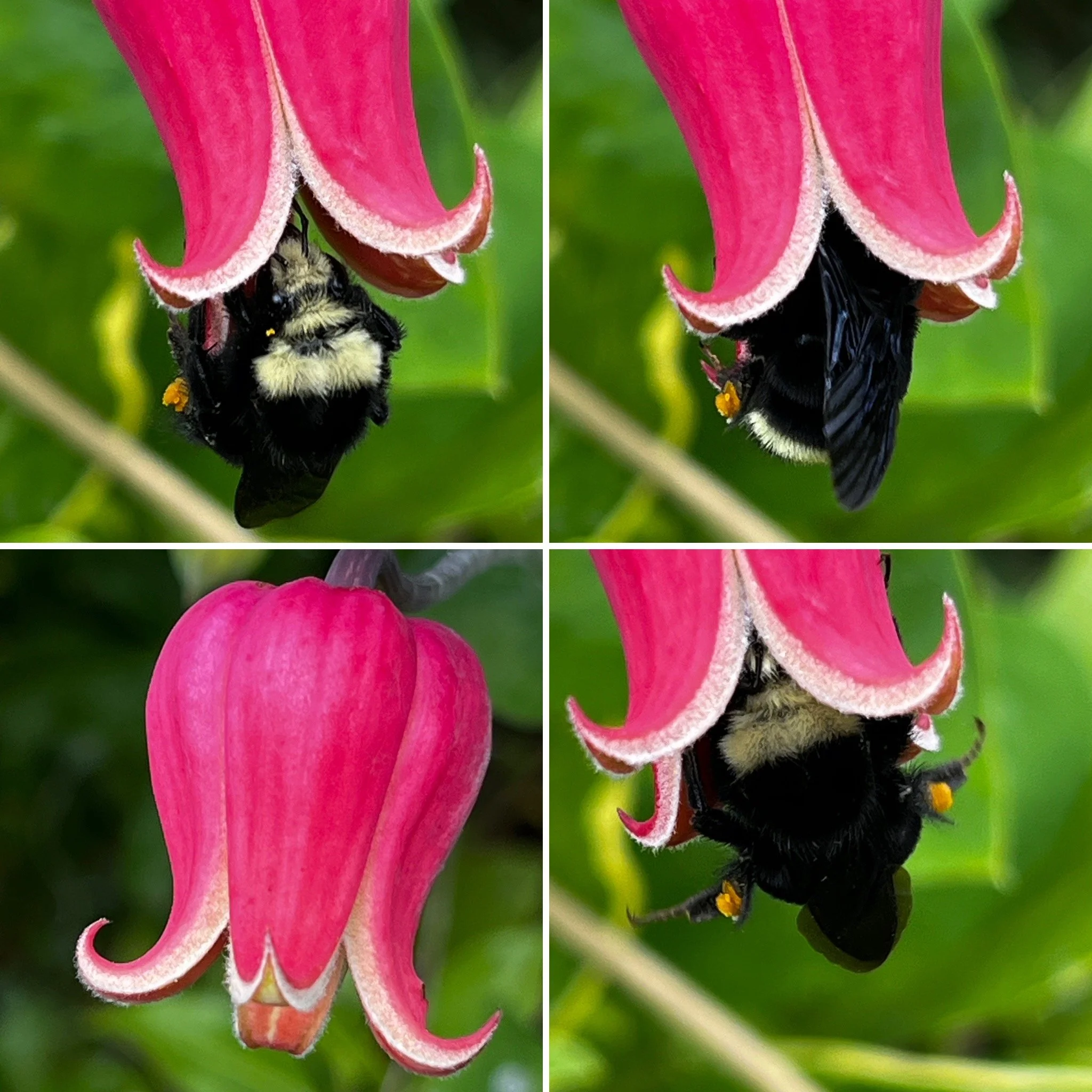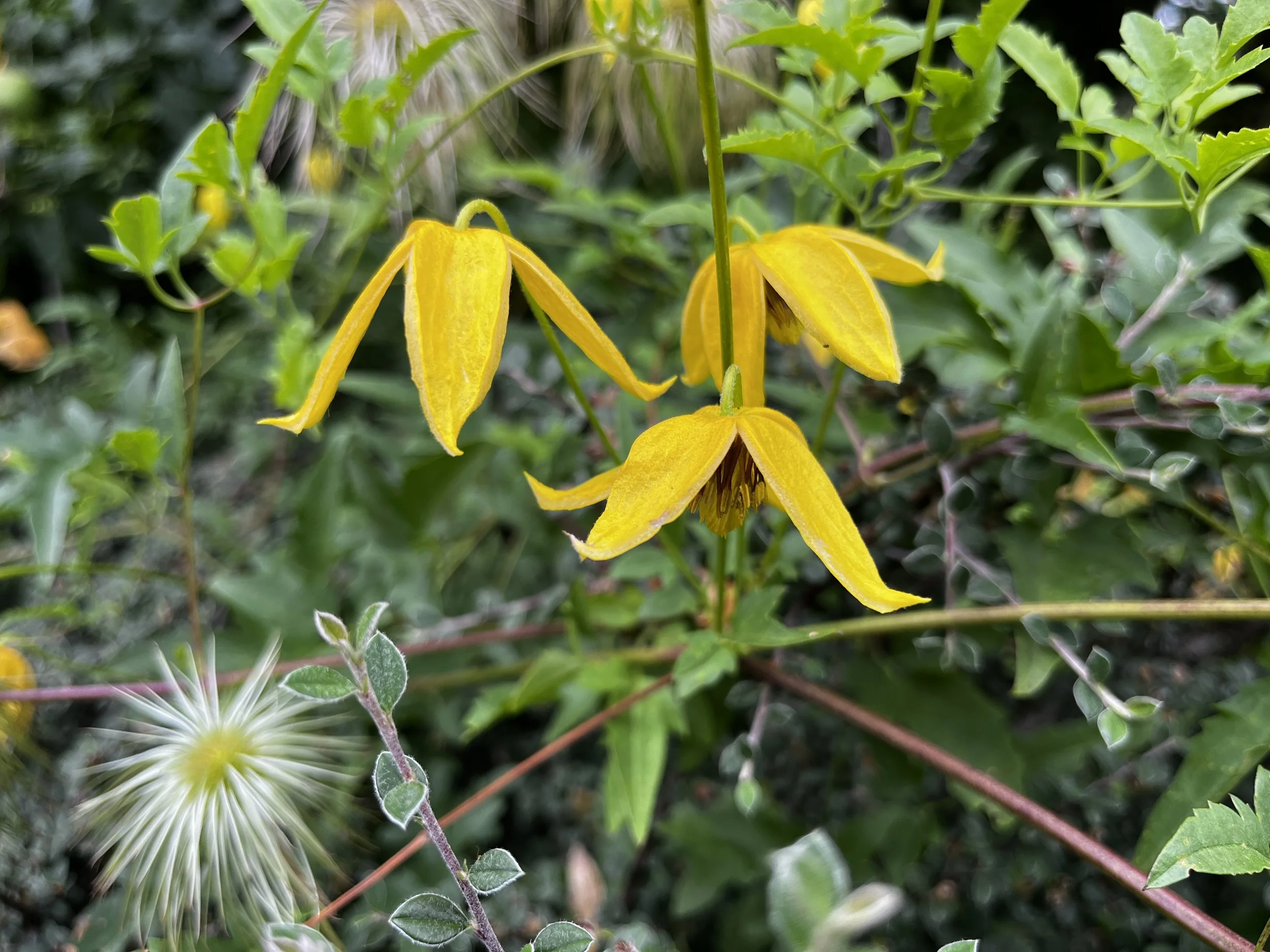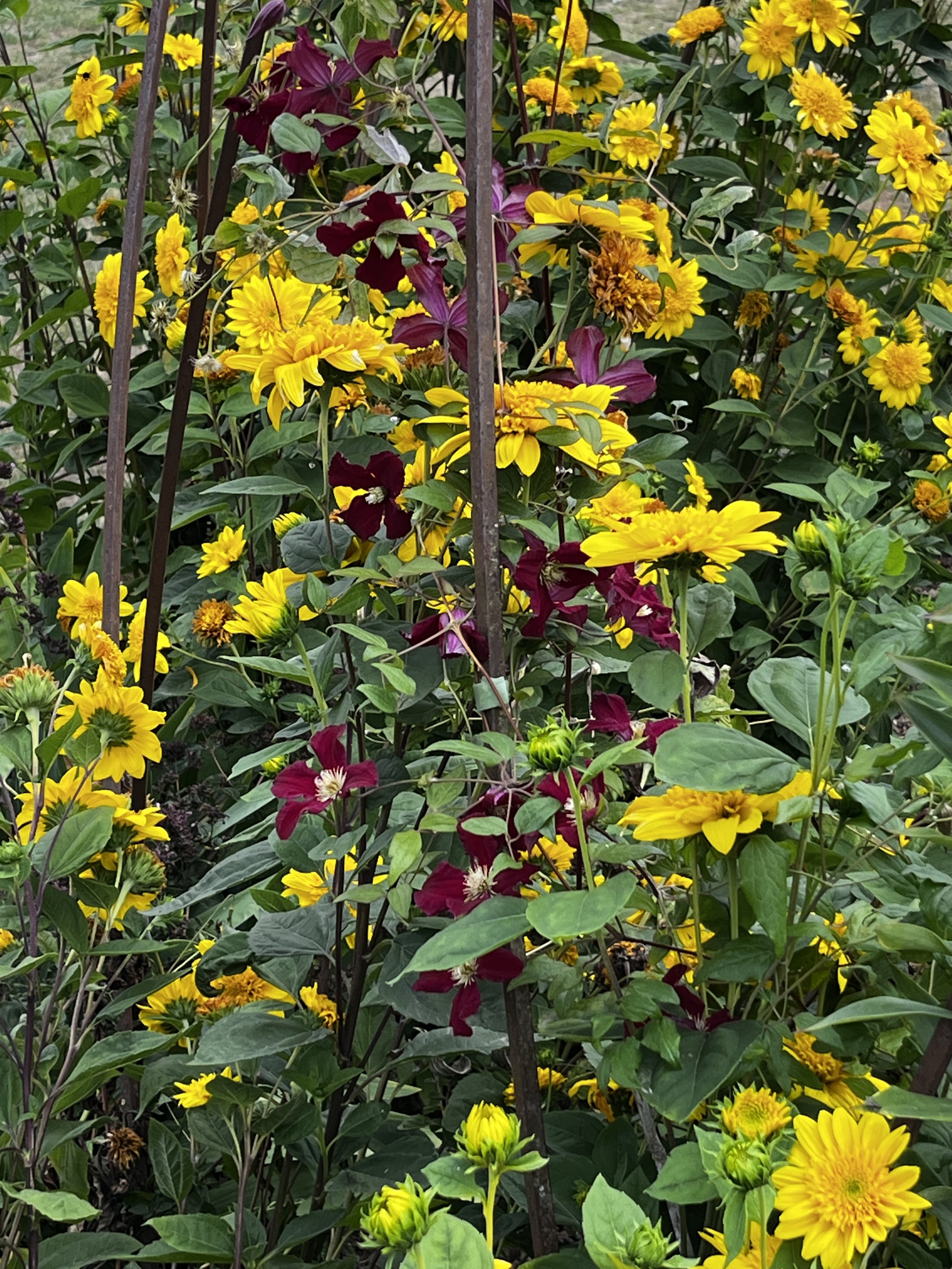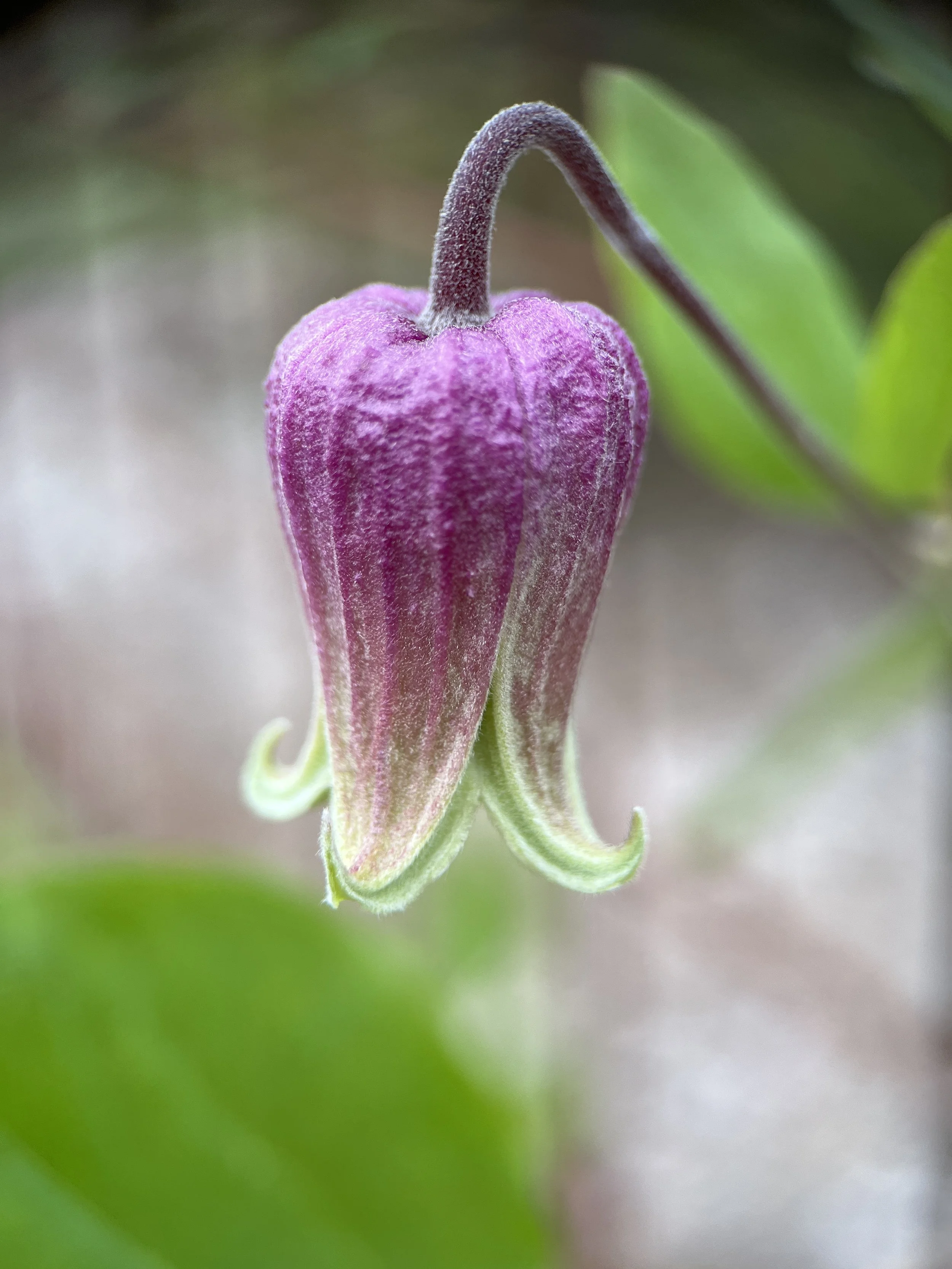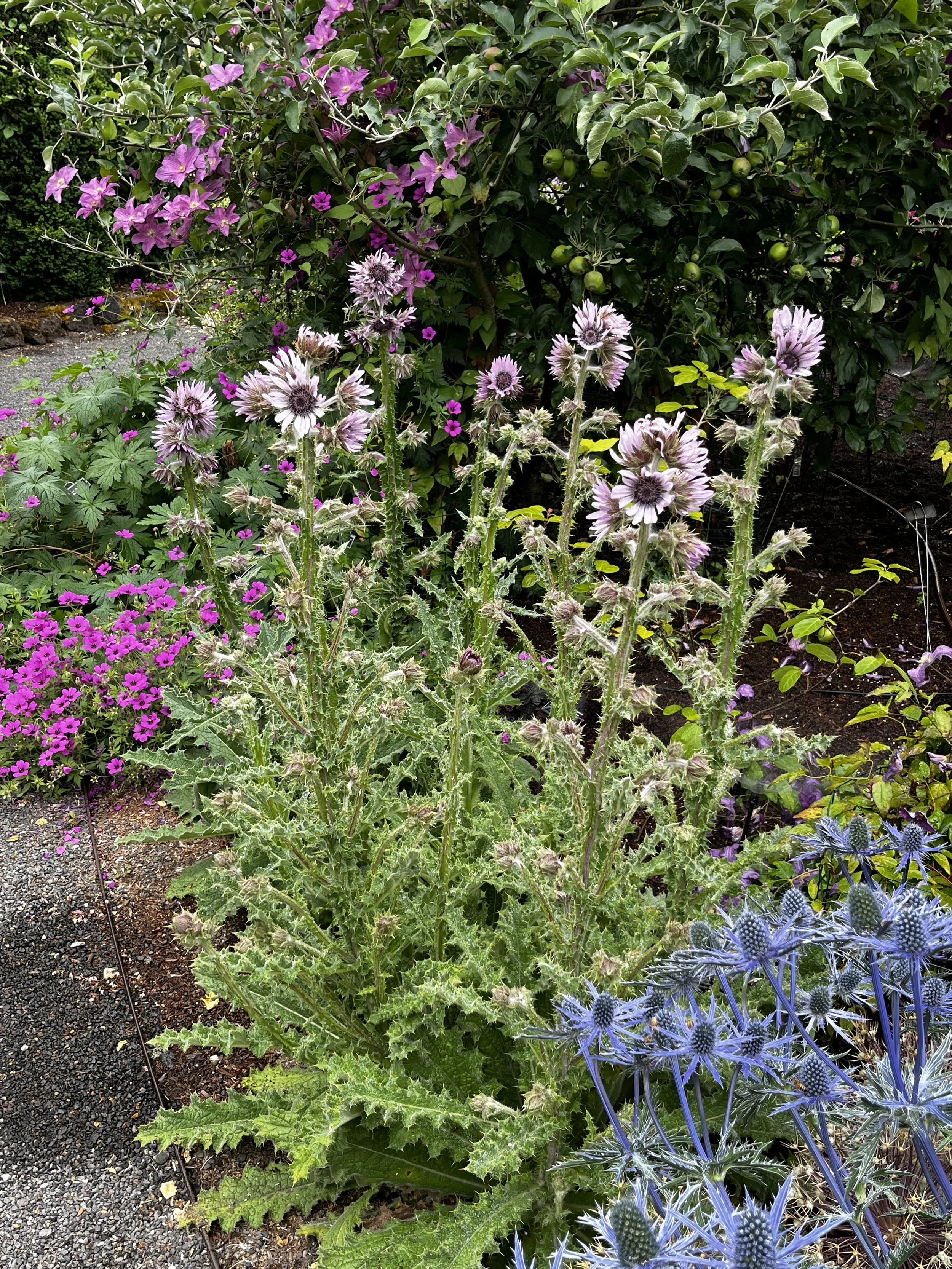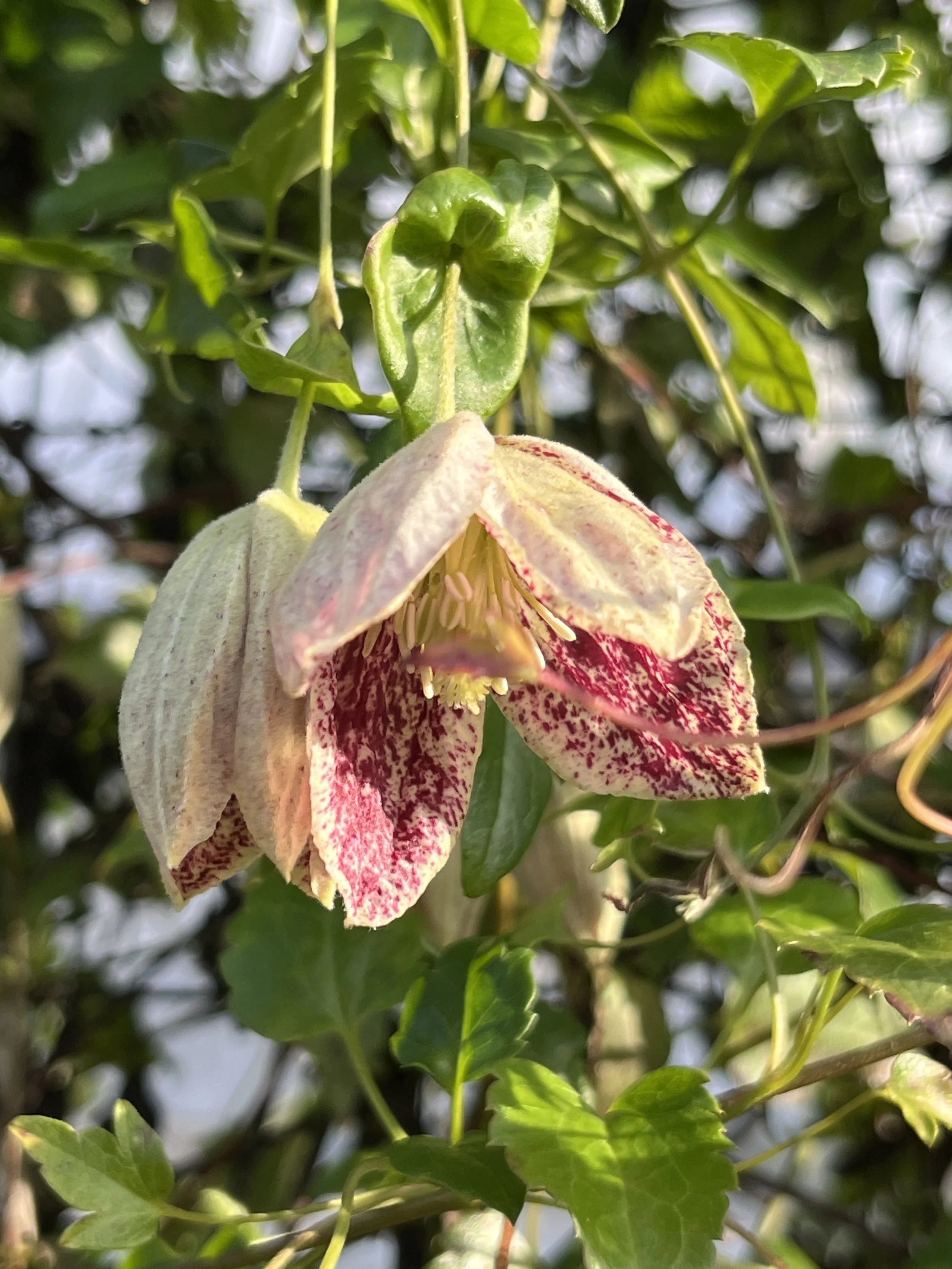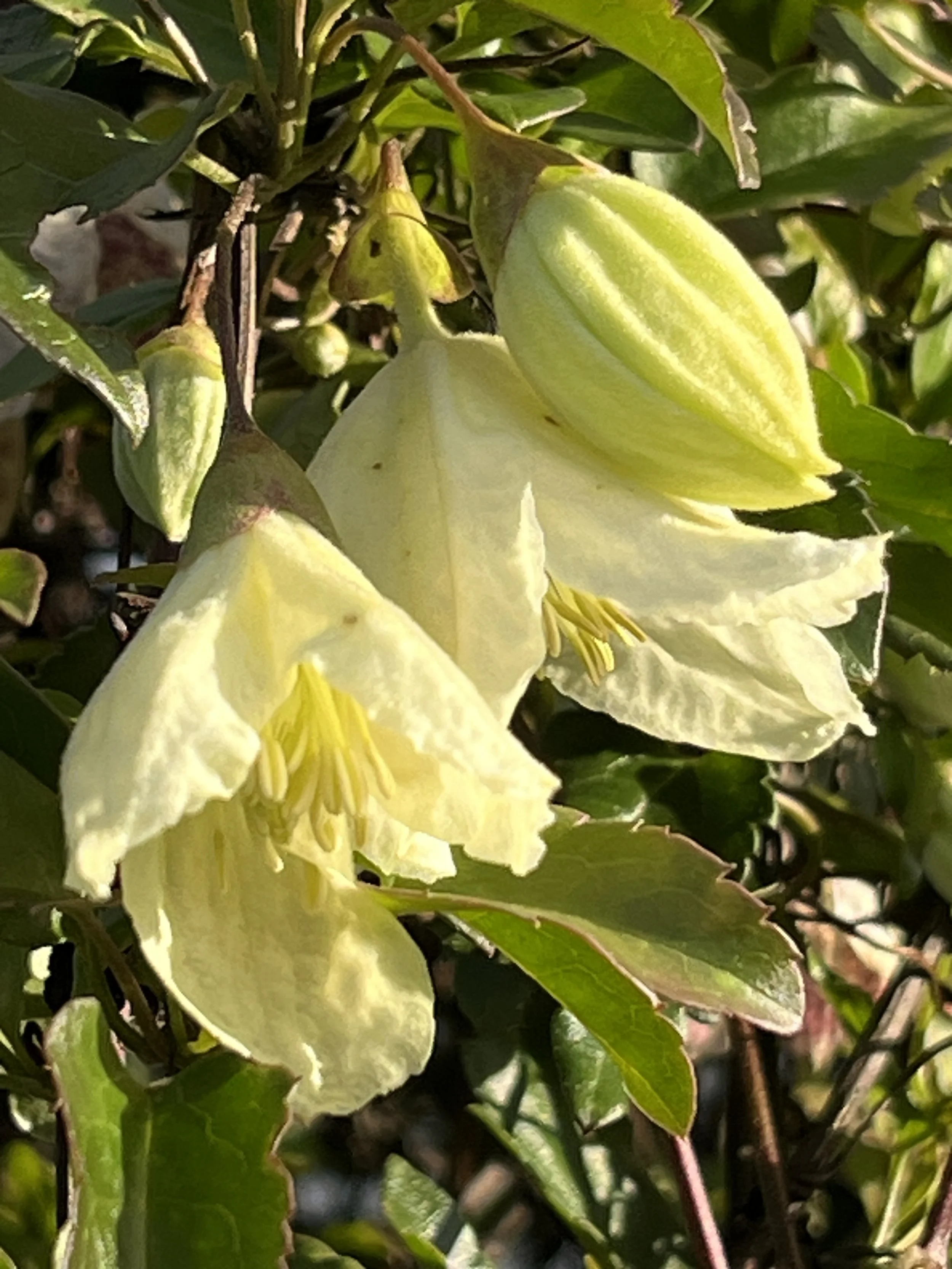What's in Bloom?
There are always clematis blooming in the garden! See below for a complete list of this week's blooms, plus a map to help you find each theme garden and bed number.
Year End Wrap Up for 2025: December 11, 2025. As we dwindle down to the Winter Bloomers carrying us through the dark months, let’s look back at some of the clematis that had a super year. Peak Bloom this year was counted on July 3, with 411 clematis species and hybrids in bloom, an all time record! That means we have lots of highlights to share.
For those of you on Facebook, look for us at Rogerson Clematis Garden. We’re on Instagram at @rogersonclematis as well as Rogerson Clematis Garden.
Visit CLEMATIS SALES: ONSITE sales and ONLINE ordering!
Visit CLEMATIS CARE for information sheets on growing clematis. If your questions are not answered there, call or text FRCC at 971-777-4394. Also, for a more detailed response, or to send photos for clematis identification, please email info@rogersonclematiscollection.org
Image taken on April 9, 2025. Clematis ‘Dark Dancer’ shows just how effectlive clematis can be as draping plants. These urns are in the Entry Border.
Image from May 1, 2025. Our Bed 1 trio, planted in autumn 2024, has settled in well. On the left is white ‘Gekkyuden’ and on the right is the double green ‘Midori’. ‘Midori’ rebloomed in early September.
Image taken August 16, 2925 finds Bed 23 in its full glory, with wands of Clematis tubulosa and heracleifolia hybrids and selections in full and fragrant bloom, interspersed with fluffy mounds of long-blooming Aster x frikartii ‘Jungfrau’. The main clematis here is C. heracleifolia ‘Blue Mood’.
Image from May 17, 2025. We have not had super luck with the heirloom Clematis ‘Souvenir de Capitaine Thuilleaux’ in the ground, but now we know it is an excellent variety for containers. This container is in Bed 11. Behind it on the fence is lavender-blue ‘Countess of Lovelace’, and the white clematis further back is Clematis spooneri.
Thanks to the generousity of one of our members, himself an avid clematis collector, we were able to add Clematis aethusifolia to the collection in 2024, and in flowered in a container in Bed 7 on September 9, 2025.
August 2025. This image created using an app called Layout. A clip-on macro lens allows us to capture both intimate details of Clematis glaucophylla flowers as well as busy pollinators, like this Yellow-faced Bumblebee. Bed 7
Image from August 7, 2025. We had excellent rebloom on Clematis coactilis this year. It is native to the shale barrens formations in western Virginia. Scroll down to The Front Bank Bed 14 list to see a picture of what a shale barrens looks like. Lolling onto the clematis is Eryngium yuccafolium.
Image taken on June 25, 2025. Clematis ‘Diahelios’ HELIOS posed for a close-up in Bed 16. It is earlier to bloom than some other clematis in the Tangutica Group.
Image taken May 31, 2025. This clematis, ‘Jackmanii Alba’ is planted in the Heirloom Garden Bed 7, but uses a nearby Sambucus nigra ‘Eva’ BLACK LACE planted over the fence in Bed 15.
Image from August 7, 2025. Although there was a lot is disruption on The Egg this summer, Clematis ‘Vitiwester’ BURNING LOVE soldiered on undaunted.
Image from May 24, 2025. After recommending ‘Piilu’ for many years as a great plant for containers, we are finally growing it that way! It decided to go both us and drape down.
Image taken on April 9, 2025. Clematis macropetala ‘Wesselton’ flowering brilliantly in Bed 16, in a Cornus compressa.
Image from July 3rd, 2025. All in the family, with ‘Zoprika’ PRINCESS KATE and larger, all white ‘Prince George’, named for her eldest son. This is the first time they have flowered at the same time.
Image from June 30, 2025. Our own introduction, ‘Twist and Shout’, mingling with Salvia ‘Nachtvlinder’ in the Entry Border, which features clematis doing things people don’t expect them to do. The Entry Border is designed to highlight the breadth of form and function within the genus Clematis.
Image from July 3, 2025. At peak bloom, we had some beautifully solid waves of color through the Modern Garden’s rows of the Viticella Group. Here we have ‘Sodertalje’ (reddish) and ‘Tim’s Passion’ (purpleish bells).
Image from September 30, 2025. We were delighted to help welcome a new species into horticulture this year, Clematis subreticulata. We have several specimens collected for various locations within its range in the SE USA. This species is part of the study of new “vining viornae” clematis sponsored by the Mt. Cuba Center in Delaware. We are their duplicate collection.
Image from August 22, 2025. No discussion of the new Entry Border or the successful clematis of 2025 would be complete without showing ‘Raindance’, a new, non-climbing clematis in the Integrifolia Group. It was introduced by Walter’s Gardens in Michigan, and it makes a terrific groundcover. It bloomed for 10 weeks!
OTHER PLANTS
Image from February 3, 2025. The rest of the year, Hamamellis ‘Quasimodo’ makes a sturdy green support for neighboring clematis. But in mid-winter, it truly shines in its own quirky way.
Image from June 25, 2025. Meet Berkheya purpurea ‘Zulu Warrior’, a wonderful herbaceous perennial from South Africa. It starts out looking like a thistle until the broad pale-lavender daisies burst open. This unique plant has a very long period of bloom, and once deadheaded, will rebloom modestly in early October.
The Modern Garden
At the end of each row along the center aisle is a modern non-climbing hybrid or very short-growing vining cultivar.
ROW 1, Profuse summer bloomers related to C. viticella and some summer urn/trumpet hybrids related to C. texensis
nothing in boom
ROW 2, Profuse summer bloomers and Pink large-flowered cultivars
Nothing in bloom for now
RAYMOND EVISON HYBRIDS (Rows 3-7)
ROW 3, Evison Hybrids
nothing in bloom
ROW 4, Evison Hybrids
nothing in bloom
ROW 5, Evison Hybrids
nothing in bloom
ROW 6, Evison Hybrid
nothing in bloom
ROW 7, Evison Hybrids
nothing in bloom
ROW 8, Double large-flowered clematis
nothing in bloom
ROW 9, Profuse flowering clematis (C. viticella and C. texensis hybrids)
nothing in bloom
WE WOULD LIKE TO HUMBLY REQUEST THAT, FOR THE FORESEEABLE FUTURE, CLEMATIS BREEDERS HOLD A MORATORIUM ON NAMING C. viticella and C. texensis HYBRIDS WITH CULTIVAR NAMES BEGINNING WITH ‘P’. WE CAN’T FIT ANYMORE IN THE ALLOTTED AREA, AND IT’S PLAYING HAVOC WITH THE ALPHABET. Thanks. ;-)
SZCZEPAN MARCZYNSKI HYBRIDS (Rows 10 & 11)
ROW 10, Marczynski Hybrids
nothing in bloom
ROW 11, Marczynski Hybrids and White large-flowered cultivars
nothing in bloom
ROW 12, Red large-flowered cultivars
nothing in bloom
ROW 13, Red large-flowered cultivars and Purple large-flowered cultivars
nothing in bloom
ROW 14, Lavender/Blue large-flowered cultivars
nothing in bloom
ROW 15, Lavender/Blue large-flowered cultivars and Striped/Barred large-flowered cultivars
nothing in bloom
ROW 16, Striped/Barred large-flowered cultivars and Late Adds
nothing in bloom
Beech Tree's Garden
BED 1
nothing in bloom
BED 2
nothing in bloom
BED 3
nothing in bloom
BED 4
This is one of our largest beds, starting across the paths from Bed 3 and Heirloom Garden Bed 5, continuing along the west boundary fence of The Antipodes beds, and the gravel path towards the chicken coop. Step down to the greenhouse level and walk back toward the farmhouse, which will end the Bed 4 loop.
nothing in bloom
Coop Border
Along the west side of the chicken coop and run, this bed faces due west, so the clematis planted here are sun-lovers, along with their herbaceous perennial companions.
nothing in bloom
Entry Border
nothing in bloom
This new feature of the Rogerson Clematis Garden is a long perennial border opposite the Coop Border. It begins with an anonymously donated metal arc with waving stems of reeds on which large-flowered hybrids climb, greeting visitors with that which they expect to see. But beyond the arc are the other forms of clematis most people don’t know about. Large flat panel trellises are populated by clematis that get big. They are fronted by clematis that cannot climb, in all of their wonderful colors and flower forms. A series of urns house draping clematis from the Atragene section (this is the section with C. macropetala and C. alpina, among many other species), which start flowering in April and repeat bloom through the summer. We have some woody shrub clematis here, too! Into all of this celebration of the variation within the genus Clematis, we have added an array of herbaceous perennials from groundcovers to tall summer-blooming plants, including lilies and repeated stands of Celtica gigantea (syn. Stipa gigantea, stipa grass). We have carefully selected a few shrubs into which the non-climbing clematis may loll if they choose.
Heirloom Garden
BED 5
nothing in bloom
BED 6
nothing in bloom
BED 7
nothing in bloom
BED 8
nothing in bloom
BED 9
nothing in bloom
BED 10
nothing in bloom
BED 11
nothing in bloom
BED 12
nothing in bloom
BED 13
nothing in bloom
The Front Bank
What is a shale barren? Thousands of years ago, Virginia was underwater. As the inland seas retreated, the layers of compressed silt formed these massive walls of quite fertile crevices, if you have roots that know how to exploit the nutrients. The little mounds of green at the upper right and at the bottom of the shale scree are clever Clematis coactilis.
BED 14
nothing in bloom
The Baltic Border
BED 15
nothing in bloom
The Founder’s Garden
BED 16
nothing in bloom
The Steppe Garden
BED 17
This bed wraps around both sides of the old Gravenstein apple tree and includes the stock plants at the south end of the Test Garden.
nothing in bloom
Old Poland (the Polish Beds)
BED 18
nothing in bloom
BED 19
nothing in bloom
BED 20
nothing in bloom
The Beginner’s Garden
BED 21
nothing in bloom
BED 22
nothing in bloom
The Hedges
BED 23
nothing in bloom
BED 24
nothing in bloom
Winter Bloomers
Inside the Sales Terrace, these clematis are growing on 4’ wide by 10’ tall flat panel trellises. When we have volunteers on hand, Monday, Wednesday, and Friday from 10-2 through the winter, the gates into the Sales Terrace will be unlocked for easier viewing.
Clematis cirrhosa var. purpurascens ‘Freckles’ in bloom now, December 2025.
Clematis cirrhosa ‘Ourika Valley’ is a selection from the High Atlas Mountains of Morocco. Flowering December 11, 2025
In bloom: Clematis cirrhosa ‘Ourika Valley’, Clematis cirrhosa var. purpurascens ‘Freckles’, Clematis cirrhosa var. cirrhosa, Clematis cirrhosa ‘Jingle Bells’, Clematis cirrhosa var. purpurascens ‘Lansdowne Gem’, Clematis cirrhosa ‘Wisley Cream’, Clematis cirrhosa var. balearica.
Troughs
nothing in bloom
Subtropical Shade Porch
Clematis napaulensis, which will remain outside until a severe frost is predicted. All other specimens have been moved inside.
The Antipodes
The unique clematis native down under, in Australia and New Zealand, have many unique attributes. Even Australia’s island-state, Tasmania, has a clematis all its own. Here you will find the world’s smallest clematis (C. marmoraria), as well as a clematis with no leaves (C. afoliata). This quadrant of the world is often referred to as The Antipodes, meaning the opposite.
nothing in bloom
Test Garden/Mt. Cuba Project New Species
nothing in bloom
CONTAINER DISPLAY AREA
nothing in bloom
This area, between the Bob and Carol Gutmann Greenhouse and The Antipodes will be increasingly populated by a display/demonstration area for growing clematis in containers. We imagine a continually changing, slowly evolving space where those with small gardens will find suggestions and inspiration. Seating is coming soon, too! The broad pale green bowl in the container area will be used to make floating arrangements of clematis.
The Egg
nothing in bloom
The Egg is undergoing a major replanting to remove Agastache ‘Little Adder’, which has run amok. The more refined cottage harden plants will return, along with the hybrids and species selections of the late Ton Hannink of Holland, a past president of the International Clematis Society. What better memorial to the man than his plants?
Artist James Harrison donated a handsome structure he created using the proportions of a Fabergé egg; hence we call it The Egg. It occupies the round foundation of the long-gone Luscher Farm silo. The cottage garden herbaceous perennials and volunteer annuals (the sunflowers are full of American Goldfinches nearly all day, every day) make a mad display at the feet of the clematis climbing The Egg through the spring and summer.
Mr. Western Bluebird is a frequent percher on The Egg, reminding humans that the mealworm feeder is a thing that exists and always needs replenishing.
